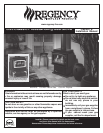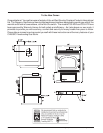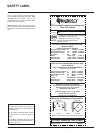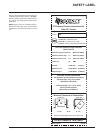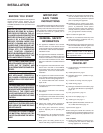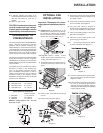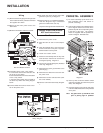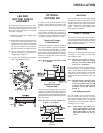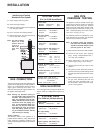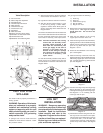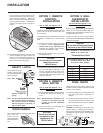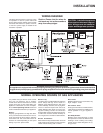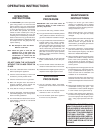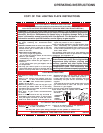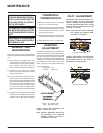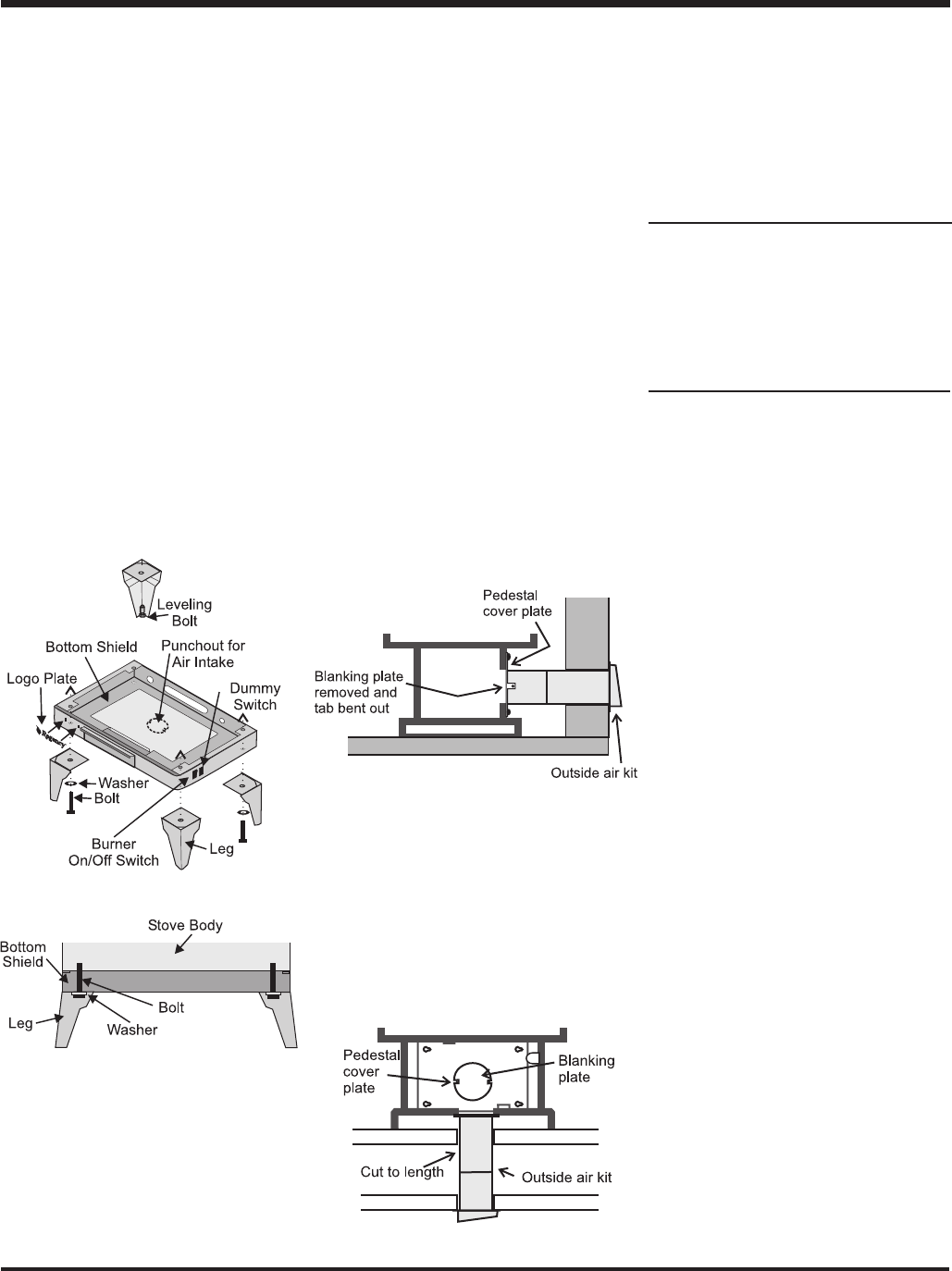
Regency CLASSIC C33-2 Freestanding Gas Stove 9
VENTING
This heater is a vented appliance and must be
connected to a chimney/flue in accordance
with installation codes.
Note: The rear cover plate is only at-
tached when outside air is being
used. Do not install it when using
room air for combustion.
For your safety this heater is equipped with a
vent safety switch. This thermally actuated
switch is located within the draft hood and will
detect either a blocked chimney or backdraft
condition where the chimney flow has re-
versed and will react by shutting off the gas
supply.
Note: The spill switch is manually reset-
table and comes from the factory
in the open position. Before trying
to start up the unit, make sure the
red button on the spill switch is
pushed in.
Venting Requirements
Four inch diameter vent is required. B-Vent,
Class A or Masonry with a liner are all accept-
able. Follow all venting manufacturer’s require-
ments and local building codes. For altitudes
above 2000 ft. we recommend that a minimum
flue height of 12 ft. is used.
Note: Proper sizing of gas vents is crit-
ical to proper operation of all gas
stoves and fireplaces. Ensure that
proper sizing tables or vent man-
ufacturers instructions are fol-
lowed.
OPTIONAL
OUTSIDE AIR
If needed, outside air for combustion can be
brought in either through the bottom of the
pedestal or through the rear plate of the pedes-
tal.
The pedestal cover plate must be installed when
using outside combustion air. Loosen the 4
screws on the rear of the pedestal and slide the
cover plate over them. Slide the plate to the left
to center it and tighten down the 4 screws.
Outside Air Through
Pedestal Bottom
Once you have properly marked the position of
your unit as outlined in "General Information"
and "Clearances to Combustibles", cut a mini-
mum 3 inch diameter hole though the floor
directly under your pedestal base to the outside.
Pipe fresh air into the pedestal area by using a
minimum 3" duct pipe with a mesh grill at the
outside termination.
Note: Blanking plate combustion air hole
is 4" diameter.
IMPORTANT
Read all instructions carefully before starting
the installation. Failure to follow these instruc-
tions may create a fire or other safety hazard,
and will void the warranty. Be sure to check the
venting and clearance to combustible require-
ments. Consult your local building codes
before beginning installation.
Rear View
Side View
DRAFT HOOD
The heater has a draft hood built into its back.
It must not be altered or obstructed, and the unit
must be installed so that the draft hood is in the
same atmospheric pressure zone as the com-
bustion air inlet to the burner.
LEG AND
BOTTOM SHIELD
ASSEMBLY
These instructions apply to the steel leg, paint-
ed cast leg and the gold plated cast leg. It will
be easier to attach the legs to the stove if it is
tipped on its back (preferably on a soft surface
to prevent scratching).
1) Remove the 4 bolts in the underside of the
base and discard.
2) Put the bottom shield up against the bottom
of the stove and loosely install the four
supplied bolts and washers into the thread-
ed holes in the four corners of the bottom
the unit. Once the bolts are started, slip the
leg under the washer and tighten the bolts.
3) Hook up wires to Burner ON/OFF switch
and valve assembly as per pedestal as-
sembly diagram (diagram 1).
4) Level the stove by adjusting the levelling
bolts in the bottom of each leg.
INSTALLATION
Outside Air Through
Pedestal Rear
Remove the blanking plate from the rear of the
pedestal cover plate and bend the two tabs out
90 degrees. Pipe fresh air into the pedestal area
by using a minimum 3" duct pipe with a mesh grill
at the outside termination. Attach the pipe to the
tabs with screws.
Note: The hole in the rear pedestal cov-
er plate is 4" diameter.



